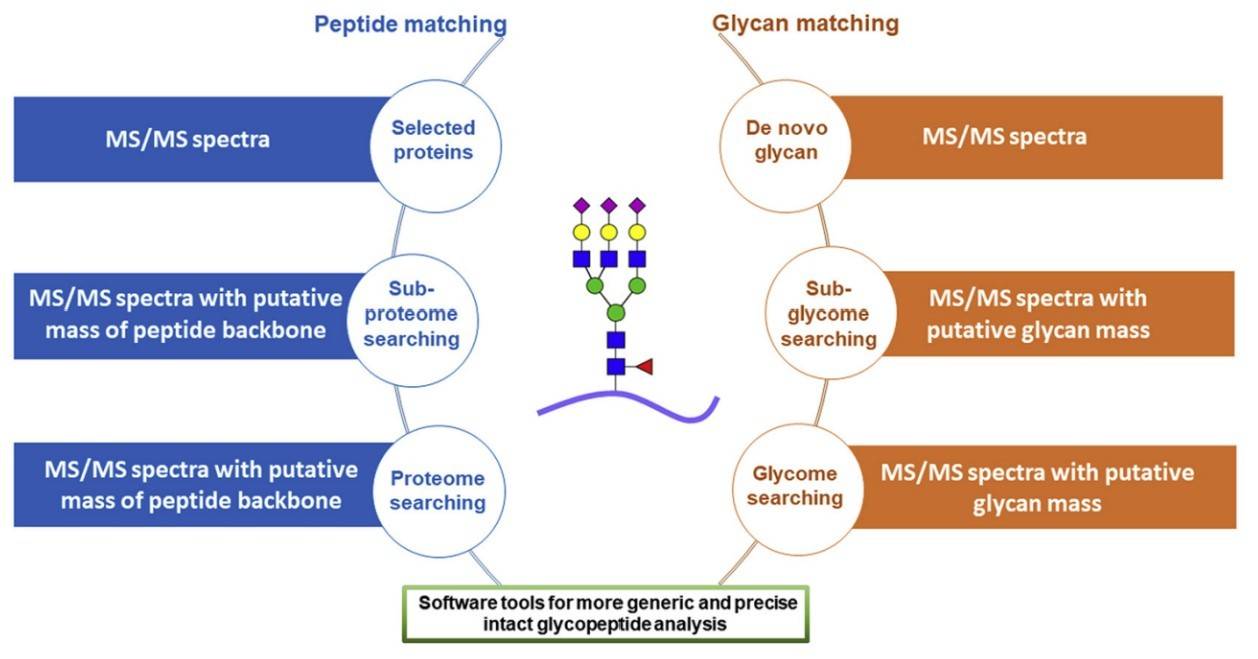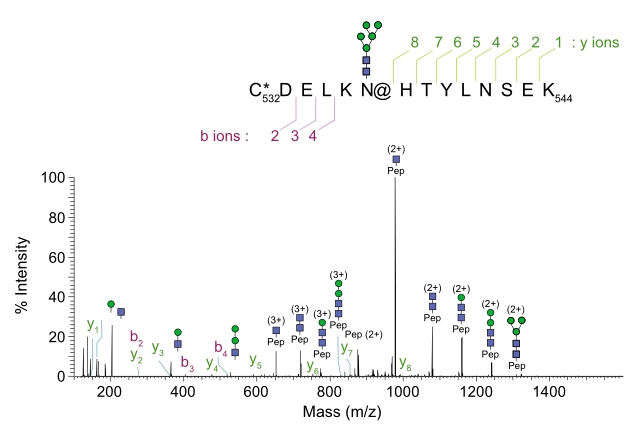Glycopeptide Analysis
Glycosylation is a very common post-translational modification that appears in nature. Analysis and characterizing glycans is an important step to correlate glycosylation structure to their bioactivities. However, research of glycans has been very challenging due to the limited quantities that are released from glycoproteins. Glycopeptide analysis provides an approach to analysis the mixture of N- and O-linked glycopeptides and peptides obtained in the protease digestion directly without the release of glycans. The key attractive feature of this method is the ability to link glycosylation information to exact locations and glycosylation sites on proteins. As a world-leading service provider in the field of glycoproteins, Creative Biolabs offers comprehensive and one-stop glycopeptide analysis services to global clients. With an established glycoprotein research platform and mature support technologies, we guarantee to provide excellent service and competitive products to customers all over the world.
Introduction of Glycopeptide Analysis
Glycopeptide analysis is a novel approach to analyzing glycans' structure without the release of oligosaccharide chains from proteins. The information of glycosylation site-specific can be retained by using glycopeptide analysis, which is to characterize glycopeptides after subjecting the glycoprotein to proteolysis. Glycopeptide analysis is usually performed in sample preparation and MS analysis steps. The first step focuses on isolating glycoprotein from complex biological mixtures. The glycoprotein is then modified via some chemical and biochemical reactions. After purification, the sample was analyzed by supporting instruments such as MS, HPLC-MS and, MALDI-TOF MS. Each of these steps is used in the analysis of both N- and O-linked glycopeptides.
 Fig.1 Summary of glycopeptide analysis tools.1, 3
Fig.1 Summary of glycopeptide analysis tools.1, 3
Because the glycosylation information is connected to the glycosylation site in which the glycan is attached, this approach is often used in glycosylation site-specific analysis. The information obtained in a site-specific manner can be important in correlating glycosylation profiles with individual glycosylation sites, which is useful in developing an understanding of the protein structure on a molecular level. This type of molecular-scale information is critical in understanding structure-function relationships.  Fig.2 Analytical profiles of glycopeptides carrying a high-mannose type N-glycan.2, 3
Fig.2 Analytical profiles of glycopeptides carrying a high-mannose type N-glycan.2, 3
Application of Glycopeptide Analysis
Although glycopeptide analysis in the drug-testing arena is a niche application, this analysis is much more widely practiced for the characterization of legally prescribed therapeutic glycoproteins. Characterizing the glycosylation on therapeutic glycoproteins is one important way that manufacturers can monitor the batch-to-batch consistency of their manufacturing process, and these analyses can also help to distinguish biosimilars, such as generic forms of therapeutic proteins.
In addition to characterizing the glycosylation of glycoprotein pharmaceuticals that are already on the market or in the late stages of development, another important aspect of characterizing recombinant glycoproteins is supporting drug discovery. For example, glycopeptide analysis has served to the development of the recombinant protein gp120 into an effective vaccine for HIV-1. These studies were all done using tryptic digestion and HPLC-MS, MS/MS, and MALDI-TOF MS on high-resolution instruments.
With the rapid development of protein science, more novel technologies have been applied to glycoprotein analysis. Therefore, Creative Biolabs launches one-stop glycopeptide analysis services to accelerate your project. For more detail on our services, please feel free to contact us.
References
-
Cao, Weiqian, et al. "Recent advances in software tools for more generic and precise intact glycopeptide analysis." Molecular & Cellular Proteomics 20 (2021).
-
Shajahan, Asif, et al. "Glycomic and glycoproteomic analysis of glycoproteins—a tutorial." Analytical and bioanalytical chemistry 409 (2017): 4483-4505.
-
Under Open Access license CC BY 4.0, without modification.
For Research Use Only.
Resources

 Fig.1 Summary of glycopeptide analysis tools.1, 3
Fig.1 Summary of glycopeptide analysis tools.1, 3
 Fig.2 Analytical profiles of glycopeptides carrying a high-mannose type N-glycan.2, 3
Fig.2 Analytical profiles of glycopeptides carrying a high-mannose type N-glycan.2, 3


